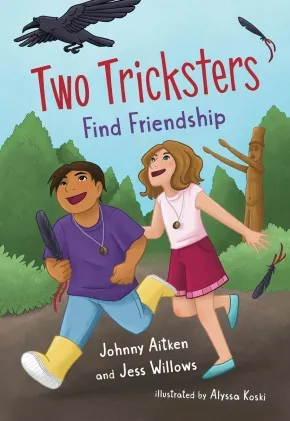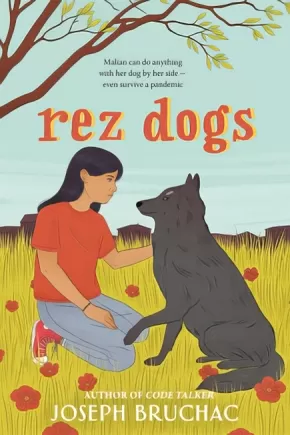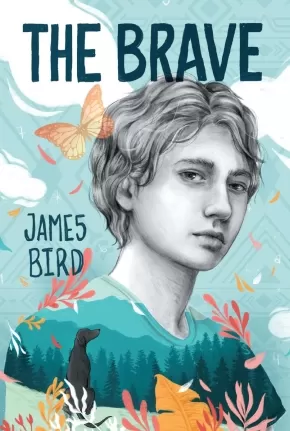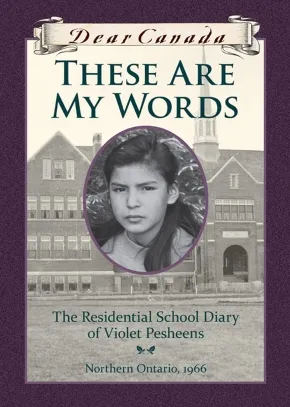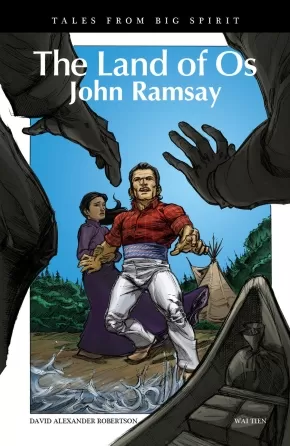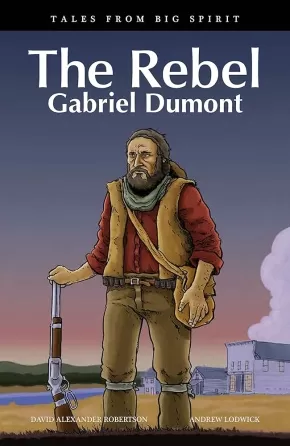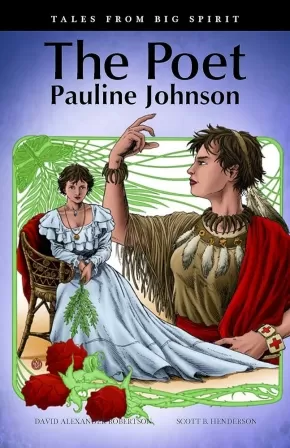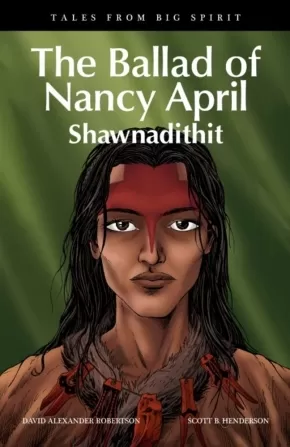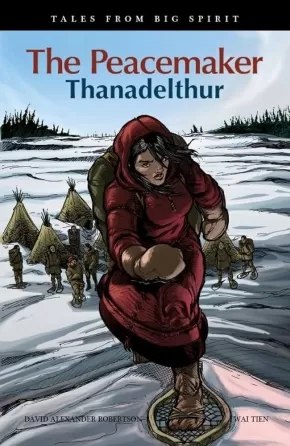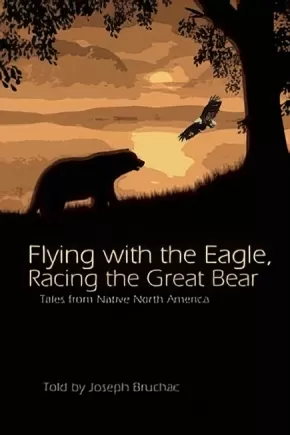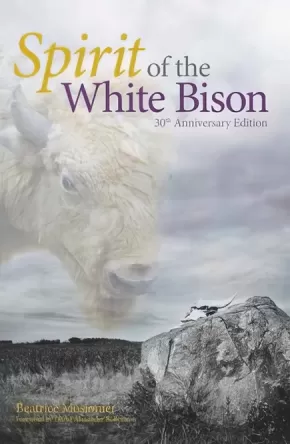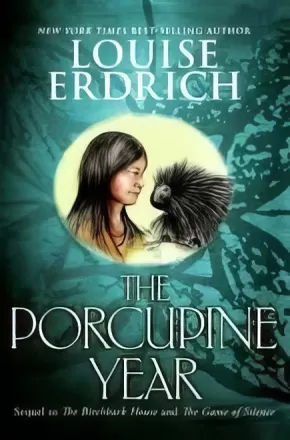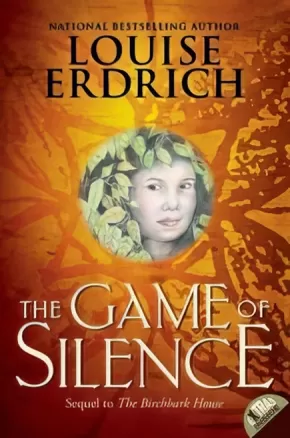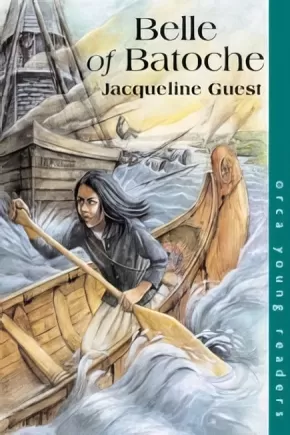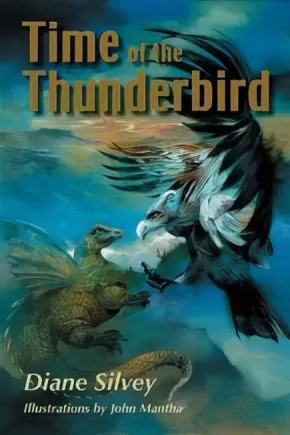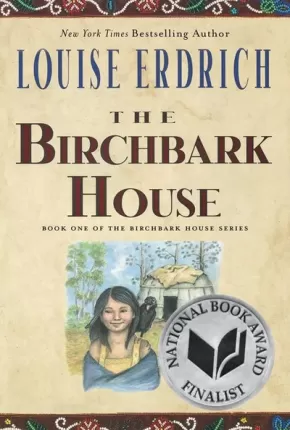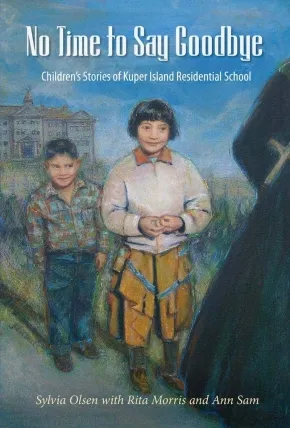
Literature Circles
1
-
15
of
25 Results;
Sort By
Go To
of 2
Two Tricksters Find Friendship
$8.95
Format:
Paperback
Text Content Territories:
Indigenous Canadian; First Nations; Salish; Coast Salish;
ISBN / Barcode: 9781459839281
Synopsis:
Synopsis:
Friendship can overcome any obstacle.
To Jessie and Johnny, their friendship is easy.
Jessie and Johnny have been inseparable ever since Jessie moved to the small island town during summer break. But as they begin fourth grade together, the new school year gets off to a rocky start when outside pressures and differences in their home lives threaten their friendship. Jessie lives comfortably and never worries about money while Johnny lives with his father and stepmother on the reserve outside of town. With guidance from Raven and spiritual teacher, Steven, the two friends bridge the gaps between them and learn to lean on each other through family troubles and cultural differences.
Reviews
"From the first paragraph, I was hooked. This is a beautiful story about friendship, family and community. The characters take us on adventures of discovering the connection to land, animals and history. Their friendship helps us understand how we care for each other on this journey of truth and reconciliation. My new favorite book!”— Monique Gray Smith, award-winning author of My Heart Fills With Happiness
“Set in the peace of a rural coastal community, this thoughtful and inspiring book creates space not just for playful adventure but reflection, curiosity and learning. Young Jessie and Johnny demonstrate the power of true friendship to bridge cultural difference, and their story shows us that wisdom comes from many kinds of teachers—the land, trickster Raven, Elders and, importantly, one another. Well-paced and charmingly illustrated, this book draws you into a beautiful world among trees and berry bushes, at the beach and the Bighouse, and it teaches that approaching each other with openness, support and respect allows for the discovery of many gifts.”— Amy Reiswig, reviewer, writer, editor
Educator & Series Information
Recommended for ages 6 to 8.
This book is part of the Orca Echoes series.
Key features:
- Two friends face the fourth grade together while learning to overcome cultural prejudices. Reconciliation is exemplified by a friendship between a non-Indigenous child and an Indigenous child.
- The authors use fictional versions of their younger selves to reimagine what it would be like if they met as children today.
- Extended family are shown as key supporters for Johnny and Jessie, and positive relationships with a grandmother, aunties, and a cousin are depicted.
- Coast Salish culture is celebrated by author Johnny Aitken’s own experiences and teachings.
- An Indigenous character, who identifies as 2Spirit, acts as a role model and educator to the two friends.
Reading Levels:
Fountas & Pinnell Text Level Gradient: R
Lexile measure: 720L
Guided Reading Level: R
This book is available in French: Johnny et Jessie reçoivent un message de Corbeau.
Additional Information
96 pages | 5.25" x 7.62" | Paperback
The Other Side of Perfect
$25.99
Format:
Hardcover
Text Content Territories:
Indigenous Canadian; First Nations; Cree (Nehiyawak);
ISBN / Barcode: 9781339002859
Synopsis:
Synopsis:
Two kids from two different worlds form an unexpected friendship in this lens into the interworking of empathy. Told in alternating narratives, The Other Side of Perfect is infused with themes of identity, belonging, and compassion, reminding us that we are all more than our circumstances, and we are all more connected than we think.
Cody’s home life is a messy, too-often terrifying story of neglect and abuse. Cody himself is a smart kid, a survivor with a great sense of humor that helps him see past his circumstances and begin to try to get himself out. Autumn is a wealthy girl from an indigenous family, who has found herself in with the popular crowd even though it’s hard for her to want to keep up.
But one night, while returning home from a movie, Autumn comes across Cody, face down in the laneway behind her house. All Cody knows is that he can’t take another encounter with his father like the one he just narrowly escaped. He can’t go home. But he doesn’t have anywhere else to go. When Autumn agrees to let him hide out in her dad’s art studio, Cody’s story begins to come out, and so does hers.
Reviews"
"Dual perspectives illuminate cultural and class differences in this thought-provoking novel by Cree and Scottish author Florence (Legends of Funland) and Scrimger (Weerdest Day Ever!)" -- Publisher's Weekly
Educator Information
Recommended for ages 8 to 13.
Additional Information
256 Pages | 5.50" x 8.25" | Hardcover
Andy's Tribal Canoe Journey
 $21.95
$21.95

Artists:
Format:
Paperback
ISBN / Barcode: 9781771746007
Synopsis:
Synopsis:
Andy has had a rough school year and is ready for summer vacation. But when Grandpa Rick tells him that he will be participating in a canoe journey instead of enjoying his usual summer activities, Andy feels he is being punished.
Join Andy as he experiences a Tribal Canoe Journey for the first time and learns what it’s like to belong to a canoe family. Follow along as Andy navigates physical and emotional challenges and finds an answer to the important question: “Who am I?”
Awards
- 2024-2025 Hackmatack Children's Choice Award Shortlisted
Reviews
“Andy's Tribal Canoe Journey is a fantastic book to use for reading groups. We were able to have amazing discussions.… Students loved the pictures and the story. I hope to read this with as many students as possible.” – Holly Polischuk, Cayoosh Elementary School educator
"This graphic novel highlights how First Peoples connect to their culture and honour their past. The first-hand perspectives of participants in the 2019 journey help showcase the human emotions and physical challenges it involves. Teachers across elementary and secondary levels can use this short graphic novel as a read-aloud in a classroom or literature circles to help students learn about Tribal Canoe Journeys. Students could also be invited to explore their own traditions and experiences, and the art in the book could inspire projects that are based on the illustrations in this story." – Focused Education Resources
Educator Information
Recommended for grades 3 to 8.
Additional Information
72 Pages | 8" x 10" | Paperback | ISBN: 978-1-77174-600-7
My Name is Seepeetza: 30th Anniversary Edition
$12.99
Format:
Paperback
Text Content Territories:
Indigenous Canadian; First Nations; Salish; Interior Salish; Nlaka'pamux (Thompson);
ISBN / Barcode: 9781773068565
Synopsis:
Synopsis:
An honest look at life in an Indian residential school in the 1950s, and how one indomitable young spirit survived it — 30th anniversary edition.
Seepeetza loves living on Joyaska Ranch with her family. But when she is six years old, she is driven to the town of Kalamak, in the interior of British Columbia. Seepeetza will spend the next several years of her life at an Indian residential school. The nuns call her Martha and cut her hair. Worst of all, she is forbidden to “talk Indian,” even with her sisters and cousins.
Still, Seepeetza looks for bright spots — the cookie she receives at Halloween, the dance practices. Most of all, there are her memories of holidays back at the ranch — camping trips, horseback riding, picking berries and cleaning fish with her mother, aunt and grandmother. Always, thoughts of home make school life bearable.
Based on her own experiences at the Kamloops Indian Residential School, this powerful novel by Nlaka’pamux author Shirley Sterling is a moving account of one of the most blatant expressions of racism in the history of Canada.
Includes a new afterword by acclaimed Cree author Tomson Highway of the Barren Lands First Nation in northern Manitoba.
Educator Information
Recommended for ages 9 to 12.
Key Text Features: afterword, dialogue, journal entries, maps.
Correlates to the Common Core State Standards in English Language Arts:
CCSS.ELA-LITERACY.RL.4.2
Determine a theme of a story, drama, or poem from details in the text; summarize the text.
CCSS.ELA-LITERACY.RL.5.1
Quote accurately from a text when explaining what the text says explicitly and when drawing inferences from the text.
CCSS.ELA-LITERACY.RL.6.6
Explain how an author develops the point of view of the narrator or speaker in a text.
Includes a new afterword by acclaimed Cree author Tomson Highway of the Barren Lands First Nation in northern Manitoba.
Additional Information
128 pages | 5.10" x 7.50"
Hunting by Stars: A Marrow Thieves Novel
$16.99
Format:
Paperback
Text Content Territories:
Indigenous Canadian; Métis;
ISBN / Barcode: 9780735269651
Synopsis:
Synopsis:
The thrilling follow-up to the bestselling, award-winning novel The Marrow Thieves, about a dystopian world where the Indigenous people of North America are being hunted for their bone marrow and ability to dream.
Years ago, when plagues and natural disasters killed millions of people, much of the world stopped dreaming. Without dreams, people are haunted, sick, mad, unable to rebuild. The government soon finds that the Indigenous people of North America have retained their dreams, an ability rumored to be housed in the very marrow of their bones. Soon, residential schools pop up—or are re-opened—across the land to bring in the dreamers and harvest their dreams.
Seventeen-year-old French lost his family to these schools and has spent the years since heading north with his new found family: a group of other dreamers, who, like him, are trying to build and thrive as a community. But then French wakes up in a pitch-black room, locked in and alone for the first time in years, and he knows immediately where he is—and what it will take to escape.
Meanwhile, out in the world, his found family searches for him and dodges new dangers—school Recruiters, a blood cult, even the land itself. When their paths finally collide, French must decide how far he is willing to go—and how many loved ones is he willing to betray—in order to survive. This engrossing, action-packed, deftly-drawn novel expands on the world of Cherie Dimaline’s award-winning The Marrow Thieves, and it will haunt readers long after they’ve turned the final page.
Reviews
"Lush, devastating, and hope-filled novel. . . . The action never lets up and is inextricably intertwined with the personal and community histories of the diverse characters who band together from various nations. Dimaline paints a nightmarish world that is too easy to imagine; it will haunt readers long after they turn the final page." ―Kirkus Reviews
"Dimaline has created vivid characters who propel a suspenseful and atmospheric story that boldly brings past, and ongoing, darkness to light." ―Booklist
"The brutal realities faced by French in the residential school will leave readers thinking about what Indigenous people endured in the residential schools of the past. The idea of storytelling and the importance of realizing that the past and present are interwoven is beautifully conveyed and will keep readers anxious for what comes next." ―School Library Journal
Educator & Series Information
Recommended for ages 12+
This book is available in French: Chasseurs d'étoiles
This book is part of the Marrow Thieves series.
Mature Content Warning: Hunting by Stars touches on physical and sexual violence.
Additional Information
408 pages | 5.50" x 8.25" | Paperback
Aggie and Mudgy: The Journey of Two Kaska Dena Children
$14.95
Format:
Paperback
Text Content Territories:
Indigenous Canadian; First Nations; Dene; Kaska Dena (Denek’eh);
ISBN / Barcode: 9781772033755
Synopsis:
Synopsis:
Based on the true story of the author’s biological mother and aunt, this middle-grade novel traces the long and frightening journey of two Kaska Dena sisters as they are taken from their home to attend residential school.
When Maddy discovers an old photograph of two little girls in her grandmother’s belongings, she wants to know who they are. Nan reluctantly agrees to tell her the story, though she is unsure if Maddy is ready to hear it. The girls in the photo, Aggie and Mudgy, are two Kaska Dena sisters who lived many years ago in a remote village on the BC–Yukon border. Like countless Indigenous children, they were taken from their families at a young age to attend residential school, where they endured years of isolation and abuse.
As Nan tells the story, Maddy asks many questions about Aggie and Mudgy’s 1,600-kilometre journey by riverboat, mail truck, paddlewheeler, steamship, and train, from their home to Lejac Residential School in central BC. Nan patiently explains historical facts and geographical places of the story, helping Maddy understand Aggie and Mudgy’s transitional world. Unlike many books on this subject, this story focuses on the journey to residential school rather than the experience of attending the school itself. It offers a glimpse into the act of being physically uprooted and transported far away from loved ones. Aggie and Mudgy captures the breakdown of family by the forces of colonialism, but also celebrates the survival and perseverance of the descendants of residential school survivors to reestablish the bonds of family.
Awards
- City of Victoria Children’s Book Prize 2022
Educator Information
Middle-grade novel recommended for ages 9 to 12.
Additional Information
144 pages | 5.50" x 8.00" | Paperback
Rez Dogs
$24.49
Format:
Hardcover
Text Content Territories:
Indigenous American; Native American; Abenaki (Wabanaki);
ISBN / Barcode: 9780593326213
Synopsis:
Synopsis:
From the U.S.'s foremost Indigenous children's author comes a middle-grade verse novel set during the COVID-19 pandemic, about a Wabanaki girl's quarantine on her grandparents' reservation and the local dog that becomes her best friend.
Malian loves spending time with her grandparents at their home on a Wabanaki reservation. She’s there for a visit when, suddenly, all travel shuts down. There’s a new virus making people sick, and Malian will have to stay with her grandparents for the duration.
Everyone is worried about the pandemic, but Malian knows how to keep her family and community safe: She protects her grandparents, and they protect her. She doesn’t go outside to play with friends, she helps her grandparents use video chat, and she listens to and learns from their stories. And when Malsum, one of the dogs living on the rez, shows up at their door, Malian’s family knows that he’ll protect them too.
Told in verse inspired by oral storytelling, this novel about the COVID-19 pandemic highlights the ways Malian’s community has cared for one another through plagues of the past, and how they keep caring for one another today.
Reviews
“Hidden throughout this moving novel in verse, old stories are discovered like buried treasures.”—Kirkus
“With this gentle book, Bruchac offers children another story to expand their worlds and hearts.”—Booklist
Educator Information
Recommended for ages 8 to 12.
Additional Information
192 pages | 5.50" x 8.25"
The Brave
$10.99
Format:
Paperback
Text Content Territories:
Indigenous American; Native American; Anishinaabeg; Ojibwe (Chippewa);
ISBN / Barcode: 9781250791740
Synopsis:
Synopsis:
The middle-grade novel The Brave is about a boy with an OCD issue and his move to a reservation to live with his biological mother.
Collin can't help himself—he has a unique condition that finds him counting every letter spoken to him. It's a quirk that makes him a prime target for bullies, and a continual frustration to the adults around him, including his father.
When Collin asked to leave yet another school, his dad decides to send him to live in Minnesota with the mother he's never met. She is Ojibwe, and lives on a reservation. Collin arrives in Duluth with his loyal dog, Seven, and quickly finds his mom and his new home to be warm, welcoming, and accepting of his condition.
Collin’s quirk is matched by that of his neighbor, Orenda, a girl who lives mostly in her treehouse and believes she is turning into a butterfly. With Orenda’s help, Collin works hard to overcome his challenges. His real test comes when he must step up for his new friend and trust his new family.
Reviews
"It's rare to find a book that gives insight into an intensely specific cultural and cognitive experience, yet simultaneously taps something universal: wanting to be accepted for who you are and find where you fit. The Brave does just that, and so much more. I've never read anything like it. Collin is a kid it's impossible not to root for."—Nic Stone, New York Times-bestselling author of Dear Martin
Educator Information
Recommended for ages 9 to 12.
#Ownvoices story about an Ojibwe boy named Colin who is finding out who he really is.
Additional Information
320 pages | 5.13" x 7.67" | Paperback
Pemmican Wars
$21.95
Artists:
Format:
Paperback
Text Content Territories:
Indigenous Canadian; Métis;
ISBN / Barcode: 9781553796787
Synopsis:
Synopsis:
Echo Desjardins, a 13-year-old Métis girl adjusting to a new home and school, is struggling with loneliness while separated from her mother. Then an ordinary day in Mr. Bee’s history class turns extraordinary, and Echo’s life will never be the same. During Mr. Bee’s lecture, Echo finds herself transported to another time and place—a bison hunt on the Saskatchewan prairie—and back again to the present. In the following weeks, Echo slips back and forth in time. She visits a Métis camp, travels the old fur-trade routes, and experiences the perilous and bygone era of the Pemmican Wars.
Educator & Series Information
Recommended for ages 12+ by the publisher.
Pemmican Wars is the first graphic novel in the A Girl Called Echo series.
Books in this series include:
Volume 1: Pemmican Wars
Volume 2: Red River Resistance
Volume 3: Northwest Resistance
Volume 4: Road Allowance Era
The Canadian Indigenous Books for School list recommends this for Grades 5-12 for these subject areas: Arts Education, English Language Arts, Social Studies.
This book is available in French: Elle s'appelle Echo Tome 1: La guerre du Pemmican
Additional Information
48 pages | 6.50" x 10.00"
Dear Canada: These Are My Words: The Residential School Diary of Violet Pesheens
$16.99
Format:
Hardcover
Text Content Territories:
Indigenous Canadian; First Nations; Anishinaabeg;
ISBN / Barcode: 9781443133180
Synopsis:
Synopsis:
Acclaimed author Ruby Slipperjack delivers a haunting novel about a 12-year-old girl's experience at a residential school in 1966.
Violet Pesheens is struggling to adjust to her new life at residential school. She misses her Grandma; she has run-ins with Cree girls; at her "white" school, everyone just stares; and everything she brought has been taken from her, including her name-she is now just a number. But worst of all, she has a fear. A fear of forgetting the things she treasures most: her Anishnabe language; the names of those she knew before; and her traditional customs. A fear of forgetting who she was.
Her notebook is the one place she can record all of her worries, and heartbreaks, and memories. And maybe, just maybe there will be hope at the end of the tunnel.
Drawing from her own experiences at residential school, Ruby Slipperjack creates a brave, yet heartbreaking heroine in Violet, and lets young readers glimpse into an all-too important chapter in our nation's history.
Educator Information
Find the French translation of this resource here: Cher journal: Les mots qu'il me reste
Additional Information
192 pages | 5.54" x 7.66"
The Land of Os: John Ramsay
$17.95
Artists:
● Wai Tien
Format:
Paperback
Text Content Territories:
Indigenous Canadian; First Nations; Anishinaabeg; Ojibway; Saulteaux;
ISBN / Barcode: 9781553794912
Synopsis:
Synopsis:
When Richard’s class from Big Spirit School takes a canoe trip, he and his classmates chance upon an elderly woman. She tells them the story of her grandfather, John Ramsay, of the Sandy Bar community on Lake Winnipeg. Ramsay’s land was taken by the government and given to the new settlers from Iceland who arrived there in 1875. Yet many owed their survival to Ramsay, who helped them through freezing winters, hunger, and a devastating smallpox epidemic.
Educator & Series Information
The Land of Os is one book in the Tales From Big Spirit series. Tales from Big Spirit is a unique graphic novel series that delves into the stories of great Indigenous heroes from Canadian history—some already well known and others who deserve to be. Designed to correspond to grades 4–6 social studies curriculums across Canada, these full colour graphic novels could be used in literature circles, novel studies, and book clubs to facilitate discussion of social studies topics. These books will help students make historical connections while promoting important literacy skills.
A Teacher's Guide is also available for the Tales from the Big Spirit Series: Tales from the Big Spirit Series Teacher's Guide. The teacher's guide is designed to help classroom teachers use the graphic novel series, Tales From Big Spirit, by David Alexander Robertson. The guide provides detailed lessons that meet a wide range of language arts and social studies goals, integrate Indigenous perspectives, and make curricular content more accessible to diverse learners.
This resources is also available in French: D'hier à aujourd'hui, Le protecteur d’Ós : John Ramsay
Additional Information
30 pages | 6.50" x 10.00"
The Rebel: Gabriel Dumont
$17.95
Artists:
Format:
Paperback
Text Content Territories:
Indigenous Canadian; Métis;
ISBN / Barcode: 9781553794769
Synopsis:
Synopsis:
For Tyrese, history class is the lowest point of his school day. That is, until his friend Levi reveals a secret – a secret that brings history alive, in the form of one Gabriel Dumont. Through Dumont, a great Métis leader of the Northwest Resistance, the boys experience a bison hunt, a skirmish with the Blackfoot, and an encounter with the great Louis Riel, and, ultimately, a great battle of the Northwest Resistance at Batoche, Saskatchewan.
Educator & Series Information
The Rebel is one book in the Tales from Big Spirit series. Tales from Big Spirit is a unique graphic novel series that delves into the stories of great Indigenous heroes from Canadian history—some already well known and others who deserve to be. Designed to correspond to grades 4–6 social studies curriculums across Canada, these full colour graphic novels could be used in literature circles, novel studies, and book clubs to facilitate discussion of social studies topics. These books will help students make historical connections while promoting important literacy skills.
Grade: for grades 4–6
A Teacher's Guide is also available for the Tales from the Big Spirit Series: Tales from the Big Spirit Series Teacher's Guide. The teacher's guide is designed to help classroom teachers use the graphic novel series, Tales From Big Spirit, by David Alexander Robertson. The guide provides detailed lessons that meet a wide range of language arts and social studies goals, integrate Indigenous perspectives, and make curricular content more accessible to diverse learners.
This resources is also available in French: D'hier à aujourd'hui, Le rebelle : Gabriel Dumont
Additional Information
30 pages | 6.50" x 10.00"
The Poet: Pauline Johnson
$17.95
Artists:
Format:
Paperback
Text Content Territories:
Indigenous Canadian; First Nations; Haudenosaunee (Iroquois); Kanyen'keha:ka (Mohawk);
ISBN / Barcode: 9781553794813
Synopsis:
Synopsis:
Although Kathy loves poetry, she is far too shy to recite it in front of her class. But the story of Pauline Johnson, renowned as the "Mohawk Princess," inspires Kathy to overcome her stage fright. Pauline, from the Grand River Reserve in Ontario, crisscrossed the country, reciting her poems to far-flung communities, making her among the most beloved literary figure of the Edwardian era.
Educator & Series Information
Tales from Big Spirit is a unique graphic novel series that delves into the stories of great Indigenous heroes from Canadian history—some already well known and others who deserve to be. Designed to correspond to grades 4–6 social studies curriculums across Canada, these full colour graphic novels could be used in literature circles, novel studies, and book clubs to facilitate discussion of social studies topics. These books will help students make historical connections while promoting important literacy skills.
Grades 4-6
Tales from the Big Spirit Series Teacher's Guide - Tales from the Big Spirit Series Teacher's Guide
The teacher's guide is designed to help classroom teacher's use the graphic novel series, Tales From Big Spirit, by David Alexander Robertson. The guide provides detailed lessons that meet a wide range of language arts and social studies goals, integrate Indigenous perspectives, and make curricular content more accessible to diverse learners.
The Poet: Pauline Johnson is available in French: La poète : Pauline Johnson
Additional Information
30 pages | 6.50" x 10.00"
The Ballad of Nancy April: Shawnadithit
$17.95
Artists:
Format:
Paperback
Text Content Territories:
Indigenous Canadian; First Nations; Beothuk;
ISBN / Barcode: 9781553794776
Synopsis:
Synopsis:
When a mishap delays Jessie at the end of a school day, she takes a shortcut home. But the shortcut turns into an adventure, as Jessie is transported through time and space, to early 19th-century Newfoundland. There she meets Shawnadithit who, as the last surviving member of the Beothuk, has witnessed the end of a once-great people.
Educator & Series Information
Tales from Big Spirit is a unique graphic novel series that delves into the stories of great Indigenous heroes from Canadian history—some already well known and others who deserve to be. Designed to correspond to grades 4–6 social studies curriculums across Canada, these full colour graphic novels could be used in literature circles, novel studies, and book clubs to facilitate discussion of social studies topics. These books will help students make historical connections while promoting important literacy skills.
Grades 4-6
A Teacher's Guide is also available for the Tales from the Big Spirit Series: Tales from the Big Spirit Series Teacher's Guide
The teacher's guide is designed to help classroom teachers use the graphic novel series, Tales From Big Spirit, by David Alexander Robertson. The guide provides detailed lessons that meet a wide range of language arts and social studies goals, integrate Indigenous perspectives, and make curricular content more accessible to diverse learners.
This resource is also available in French: D'hier à aujourd'hui, L’héritage de Nancy April : Shawnadithit
Additional Information
30 pages | 6.50" x 10.00"
The Scout: Tommy Prince
$17.95
Artists:
Format:
Paperback
Text Content Territories:
Indigenous Canadian; First Nations; Anishinaabeg; Ojibway;
ISBN / Barcode: 9781553794783
Synopsis:
Synopsis:
A search down a wooded path for a well-hit baseball turns into an encounter between Pamela and a veteran soldier standing in front of a monument. The statue commemorates the heroism of Sgt. Tommy Prince, the most decorated Aboriginal soldier in Canada. Pamela is curious, and the veteran is happy to regale her with the story of the expert marksman and tracker, renowned for his daring and bravery in World War II and the Korean War.
Educator & Series Information
Tales from Big Spirit is a unique graphic novel series that delves into the stories of great Indigenous heroes from Canadian history—some already well known and others who deserve to be. Designed to correspond to grades 4–6 social studies curriculums across Canada, these full colour graphic novels could be used in literature circles, novel studies, and book clubs to facilitate discussion of social studies topics. These books will help students make historical connections while promoting important literacy skills.
Tales from the Big Spirit Series Teacher's Guide - Tales from the Big Spirit Series Teacher's Guide.
The teacher's guide is designed to help classroom teacher's use the graphic novel series, Tales From Big Spirit, by David Alexander Robertson. The guide provides detailed lessons that meet a wide range of language arts and social studies goals, integrate Indigenous perspectives, and make curricular content more accessible to diverse learners.
The Scout: Tommy Prince is available in French: L’éclaireur : Tommy Prince
Additional Information
30 pages | 6.50" x 10.00"
The Peacemaker: Thanadelthur
$17.95
Format:
Paperback
Text Content Territories:
Indigenous Canadian; First Nations; Dene; Denesuline (Chipewyan);
ISBN / Barcode: 9781553794790
Synopsis:
Synopsis:
When Cole's teacher catches him drawing rather than listening in class, he gives Cole a special assignment: an oral presentation on an important Aboriginal figure. Cole will do almost anything to avoid speaking in public -- even feigning illness. But when he hear the story of the remarkable woman known as Thanadelthur -- peacemaker between the Cree and the Dene and interpreter for the governor of Fort York -- he is so inspired by her bravery, he overcomes his own fears.
Educator & Series Information
Tales from Big Spirit is a unique graphic novel series that delves into the stories of great Indigenous heroes from Canadian history—some already well known and others who deserve to be. Designed to correspond to grades 4–6 social studies curriculums across Canada, these full colour graphic novels could be used in literature circles, novel studies, and book clubs to facilitate discussion of social studies topics. These books will help students make historical connections while promoting important literacy skills.
Grades 4-6
Tales from the Big Spirit Series Teacher's Guide - Tales from the Big Spirit Series Teacher's Guide
The teacher's guide is designed to help classroom teacher's use the graphic novel series, Tales From Big Spirit, by David Alexander Robertson. The guide provides detailed lessons that meet a wide range of language arts and social studies goals, integrate Indigenous perspectives, and make curricular content more accessible to diverse learners.
The Peacemaker is available in French: L’ambassadrice de la paix : Thanadelthur
Additional Information
30 pages | 6.50" x 10.00"
Flying With the Eagle, Racing the Great Bear: Tales From Native North America
$12.95
Format:
Paperback
Text Content Territories:
Indigenous American; Indigenous Canadian;
ISBN / Barcode: 9781555916930
Synopsis:
Synopsis:
Flying with the Eagle, Racing the Great Bear is a continent-spanning collection of 16 thrilling tales in which young Native American men must face great enemies, find strength and endurance within themselves to succeed, and take their place by the side of their elders.
Additional Information
144 pages | 6.00" x 8.90"
A Stranger at Home: A True Story
$12.95
Editors:
Format:
Paperback
Text Content Territories:
Indigenous Canadian; Inuit; Inuvialuit (Mackenzie Inuit);
ISBN / Barcode: 9781554513611
Synopsis:
Synopsis:
The powerful memoir of an Inuvialuit girl searching for her true self when she returns from residential school.
Traveling to be reunited with her family in the Arctic, 10-year-old Margaret Pokiak can hardly contain her excitement. It's been two years since her parents delivered her to the school run by the dark-cloaked nuns and brothers.
Coming ashore, Margaret spots her family, but her mother barely recognizes her, screaming, "Not my girl." Margaret realizes she is now marked as an outsider.
And Margaret is an outsider: she has forgotten the language and stories of her people, and she can't even stomach the food her mother prepares.
However, Margaret gradually relearns her language and her family's way of living. Along the way, she discovers how important it is to remain true to the ways of her people -- and to herself.
Highlighted by archival photos and striking artwork, this first-person account of a young girl's struggle to find her place will inspire young readers to ask what it means to belong.
Sequel to Fatty Legs.
Reviews
"This memoir, detailing a woeful piece of Canadian history and demonstrating Margaret's strength of character, compassion, courage and her willingness to sacrifice herself for her family's sake, gives the reader a lot to ponder. Highly recommended." — Shelbey Krahn, Canadian Materials, February 2012
"A Stranger at Home will speak to anyone who has experienced displacement or assimilation into a new culture. This fabulous story enhances the Grades 6 to 8 social studies curriculum." — Professionally Speaking (Ontario College of Teache, April 2012
"While it may not have the same drama and tension of the first memoir, this tale provides a compelling and moving story of a girl searching for the strength to find her place in the world." — Jody Kopple, School Library Journal, December 2011
"Without being graphic or overwhelming, the Fentons recreate a tragic moment in Canadian history through the innocent reflections of a child...a must for any classroom library." — Canadian Teacher Magazine, May 2012
"This tale provides a compelling and moving story of a girl searching for the strength to find her place in the world. The writing is unpretentious and accessible and readers who enjoyed the first book will find this an interesting follow-up. Vivid paintings are a beautiful accompaniment to the storytelling. Photographs from Pokiak Fenton's own collection add important points of reference for readers looking to visualize the characters and the unique setting of the Arctic Circle. A welcome addition to biography collections." — Jody Kopple, School Library Journal, December 2011
Educator Information
Recommended Ages: 9-13.
Guided Reading Level: Fountas and Pinnell U
Themes: biography; Inuit; Indigenous peoples; arctic; residential schools; identity; community; Canadian content; family; society; history; memoir.
This resource is also available in French: Étrangère chez moi
Additional Information
128 pages | 6.25" x 9.00"
Spirit of the White Bison
$17.00
Format:
Paperback
Text Content Territories:
Indigenous;
ISBN / Barcode: 9781553793830
Synopsis:
Synopsis:
The Great Plains of North America was once home to great herds of bison. The Aboriginal people who lived there revered them and relied on them for food, clothing, and shelter. Into one of these great herds, Little White Buffalo was born in the 19th century. In this heartfelt story, she retells her life - a life that coincides with the devastation of the bison, destroyed by hunters and the coming of the railway.
Additional Information
|
The Porcupine Year
$12.50
Artists:
Format:
Paperback
Text Content Territories:
Indigenous American; Native American; Anishinaabeg; Ojibwe (Chippewa);
ISBN / Barcode: 9780064410304
Synopsis:
Synopsis:
Here follows the story of a most extraordinary year in the life of an Ojibwe family and of a girl named "Omakayas," or Little Frog, who lived a year of flight and adventure, pain and joy, in 1852.
When Omakayas is twelve winters old, she and her family set off on a harrowing journey. They travel by canoe westward from the shores of Lake Superior along the rivers of northern Minnesota, in search of a new home. While the family has prepared well, unexpected danger, enemies, and hardships will push them to the brink of survival. Omakayas continues to learn from the land and the spirits around her, and she discovers that no matter where she is, or how she is living, she has the one thing she needs to carry her through.
Richly imagined, full of laughter and sorrow, The Porcupine Year continues Louise Erdrich's celebrated series, which began with The Birchbark House, a National Book Award finalist, and continued with The Game of Silence, winner of the Scott O'Dell Award for Historical Fiction.
Educator & Series Information
This is the third book in the Birchbark House Series, a series of Indigenous juvenile fiction novels written by Ojibwe writer Louise Erdrich. The Birchbark House Series follows a character known as Omakayas and her Ojibwe community.
The books in this series in order include:
The Birchbark House
The Game of Silence
The Porcupine Year
Chickadee
Makoons
Additional Information
224 pages | 5.12" x 7.62"
The Game of Silence
$12.50
Artists:
Format:
Paperback
Text Content Territories:
Indigenous American; Native American; Anishinaabeg; Ojibwe (Chippewa);
ISBN / Barcode: 9780064410298
Synopsis:
Synopsis:
Her name is Omakayas, or Little Frog, because her first step was a hop, and she lives on an island in Lake Superior.It is 1850, and the lives of the Ojibwe have returned to a familiar rhythm: they build their birchbark houses in the summer, go to the ricing camps in the fall to harvest and feast, and move to their cozy cedar log cabins near the town of LaPointe before the first snows.
The satisfying routines of Omakayas's days are interrupted by a surprise visit from a group of desperate and mysterious people. From them, she learns that all their lives may drastically change. The chimookomanag, or white people, want Omakayas and her people to leave their island in Lake Superior and move farther west. Omakayas realizes that something so valuable, so important that she never knew she had it in the first place, is in danger: Her home. Her way of life.
In this captivating sequel to National Book Award nominee The Birchbark House, Louise Erdrich continues the story of Omakayas and her family.
Educator & Series Information
This is the second book in the Birchbark House Series, a series of Indigenous juvenile fiction novels written by Ojibwe writer Louise Erdrich. The Birchbark House Series follows a character known as Omakayas and her Ojibwe community.
The books in this series in order include:
The Birchbark House
The Game of Silence
The Porcupine Year
Chickadee
Makoons
Additional Information
288 pages | 5.12" x 7.62"
Belle of Batoche
$9.95
Format:
Paperback
Text Content Territories:
Indigenous Canadian; Métis;
ISBN / Barcode: 9781551432977
Synopsis:
Synopsis:
Belle, an 11-year-old Métis girl, and Sarah both want the coveted job of church bell ringer. An embroidery contest is held to award the position, and Sarah cheats. Before Belle can expose her, the two are caught up in the advancing forces of General Middleton and his troops as they surround Batoche in the 1885 Riel Rebellion. The church bell disappeared that day and remains missing to this day.
Reviews
"This book can be a starting point for a more in-depth look at the Métis settlement and the struggle which ensued or it can be read just for enjoyment." — Resource Links, September 2004
Educator & Series Information
This book is part of the Orca Young Readers series, which are award-winning, bestselling chapter books for ages 8–11. Titles in this series include historical and contemporary stories with age-appropriate plots.
Additional Information
144 pages | 5.00" x 7.50"
Time of the Thunderbird
$11.99
Format:
Paperback
Text Content Territories:
Indigenous Canadian; First Nations; Salish; Coast Salish;
ISBN / Barcode: 9781550027921
Synopsis:
Synopsis:
Kaya and Tala, the adventurous twins, are back from their exploits in Spirit Quest on a new mission to discover why children are disappearing from one of their tribe''s villages. Earth dwarves are being blamed for the missing children, but the twins are sure they''re not at fault. Something very sinister is happening, so once again the sister and brother set out with Yahet (Y for short), their friend and companion, to rescue the kidnapped children. Along the way they meet a mysterious owl, a cedar ogre, demons galore, Aixos, the most ferocious of all sea serpents, and the Thunderbird himself!
Additional Information
88 pages | 6.00" x 9.00"
The Birchbark House
$12.50
Artists:
Format:
Paperback
Text Content Territories:
Indigenous American; Native American; Anishinaabeg; Ojibwe (Chippewa);
ISBN / Barcode: 9780063064164
Synopsis:
Synopsis:
She was named Omakayas, or Little Frog, because her first step was a hop.
Omakayas and her family live on an island in Lake Superior. Though there are growing numbers of white people encroaching on their land, life continues much as it always has.
But the satisfying rhythms of their life are shattered when a visitor comes to their lodge one winter night, bringing with him an invisible enemy that will change things forever—but that will eventually lead Omakayas to discover her calling.
By turns moving and humorous, this novel is a breathtaking tour de force by a gifted writer.
Educator & Series Information
This is the first book in the Birchbark House Series, a series of Indigenous juvenile fiction novels written by Ojibwe writer Louise Erdrich. The Birchbark House Series follows a character known as Omakayas and her Ojibwe community.
The series is set in the nineteenth century, in the same era as Laura Ingalls Wilder's classic Little House books, but narrated from the points of view of members of an Ojibwe family. These books offer a unique and crucial perspective for fans of historical fiction.
The books in this series in order include:
The Birchbark House
The Game of Silence
The Porcupine Year
Chickadee
Makoons
This story was inspired by Louise Erdrich and her mother's research of their own family history.
Additional Information
272 pages | 5.12" x 7.62" | Paperback
No Time to Say Goodbye
$12.95
Format:
Paperback
Text Content Territories:
Indigenous Canadian; First Nations; Salish; Coast Salish; Saanich (WSANEC); Tsartlip;
ISBN / Barcode: 9781550391213
Synopsis:
Synopsis:
No Time to Say Goodbye is a fictional account of five children sent to aboriginal boarding school, based on the recollections of a number of Tsartlip First Nations people. These unforgettable children are taken by government agents from Tsartlip Day School to live at Kuper Island Residential School. The five are isolated on the small island and life becomes regimented by the strict school routine. They experience the pain of homesickness and confusion while trying to adjust to a world completely different from their own. Their lives are no longer organized by fishing, hunting and family, but by bells, line-ups and chores. In spite of the harsh realities of the residential school, the children find adventure in escape, challenge in competition, and camaraderie with their fellow students.
Educator Information
Recommended for ages 12+ by the publisher.
Additional Information
175 pages | 5.25" x 7.75" | Paperback
Sort By
Go To
of 2

